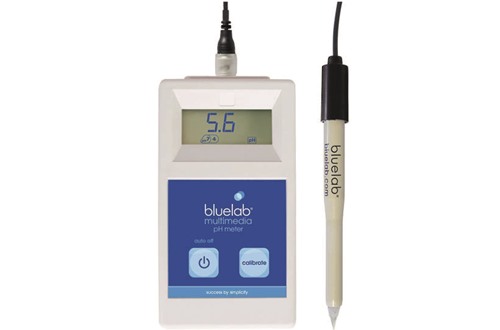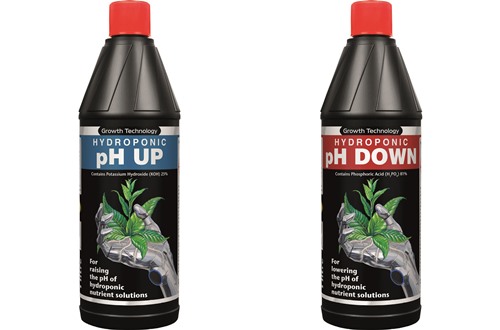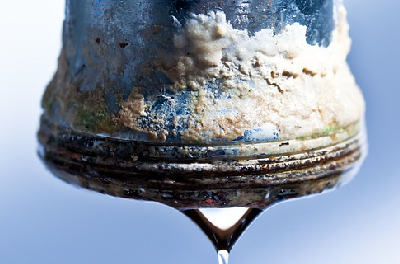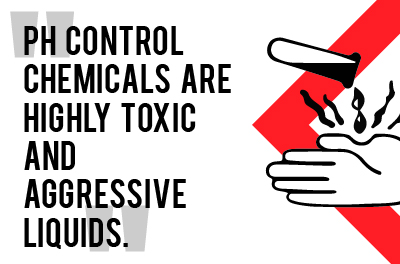pH is the measure of acidity or alkalinity of an aqueous solution. If a solution is acidic then it has a pH in the range of 0 to 6.9. If a solution is alkaline then it has a pH in the range of 7.1 to 14. Pure water or deionised water is neutral at pH 7.0. The ideal pH for most hydroponic gardening applications is between 5.8 and 6.2, except for Rockwool cultivation, which likes a slightly lower pH of about 5.5.
Why is pH important?
pH is the measure of acidity or alkalinity of an aqueous solution. The term pH refers to the potential hydrogen/hydroxyl ion content of a solution. Solutions ionise into positive and negative ions. If a solution has more hydrogen (positive) ions than hydroxyl (negative) ions then it is acidic and has a pH in the range of 0 to 6.9. Alternatively, if a solution has more hydroxyl (negative) ions than hydrogen (positive) ions then it is alkaline with a pH in the range of 7.1 to 14. Pure water and deionised water has a balance of hydrogen (H+) and hydroxyl (OH-) ions and is therefore pH neutral (pH 7).
If the pH of a solution is not within the correct range the plant will not have the ability to absorb some of the essential elements required for proper plant growth. All plants have a particular pH range, which will produce healthy growth, and this level will vary from plant to plant, but most plants prefer a slightly acidic growing environment (5.8 to 6.2), although most plants can survive in an environment with pH values between 5.0 and 7.0.
Plants grown in acidic environments can experience a variety of symptoms, including aluminium (Al), hydrogen (H), and/or manganese (Mn) toxicity, as well as nutrient deficiencies of calcium (Ca) and magnesium (Mg).
Conversely, in alkaline environments molybdenum (Mo) and macronutrients (except for phosphorus) availability increases, but phosphorus (P), iron (Fe), manganese (Mn), zinc (Zn), copper (Cu) and cobalt (Co) levels are reduced and may adversely affect plant growth. From the chart you can see that each element can become more and less available to the plants as pH changes. If the pH of your solution is out of the desired range, one or more of the essential elements will become unavailable to the plant, causing nutrient deficiencies, which will result in slow growth rates and poor yields.

There are a few ways to check the pH of your nutrient solution, e.g. paper test strips, liquid pH test kits and digital pH meters. The paper test strips are impregnated with pH sensitive dyes, which change colour when dipped into the nutrient solution. The paper strip is then compared against a colour chart to determine the pH of the solution being checked. The liquid pH kits work by adding a few drops of pH sensitive dye into a small amount of the nutrient solution and then the colour of the resulting liquid is compared against a colour chart.
The most high-tech method of checking the pH is with a digital meter. All you have to do is dip the meter/electrode into the nutrient solution for a few moments and the pH value is shown on an LCD display. The pH meters are fast and very accurate when properly calibrated. These meters need to be cared for properly or they will no longer function. The glass bulb electrode needs to be kept clean and some are required to be kept wet at all times. pH meters also need to be checked and calibrated frequently to insure accuracy.

Passive Hydroponics
Passive hydroponic systems consist of growing in containers or pots filled with a medium, e.g. soil, coco, perlite, vermiculite, rockwool cubes, or hand-watering rockwool slabs. Usually for this type of cultivation we would recommend that the grower makes up one large container of nutrient at a time. A 200 litre plastic drum is an ideal container. Once this is made up to the correct ‘strength’ (conductivity), the pH can be checked and adjusted to the ideal level of 5.8-6.2. A careful note should be made of the exact amount of pH UP or pH DOWN that is added at this time. In the future, this amount can be added as a routine when making up solutions and the pH should remain pretty constant from batch to batch, although spot checks are recommended from time to time. Ideally you should use a meter, e.g. a BlueLab pH pen. The nutrient solution in the tank should remain stable and can be applied to plants as needed.
Active Hydroponics
Active hydroponic systems are ones that the nutrient solution is supplied to the plants by a pump system. These systems include NFT, Flood & Drain, Aeroponics, and DWC Systems. In most systems the nutrient solution is re-circulated to the roots continually over a period of time. In an active system the pH will need checking and adjusting in the main tank on a regular basis. In most systems freshwater is added to the tank to replace that used by the plants. The incoming water is usually of a higher pH than the nutrient solution, so there tends to be an upward drift in pH. This can be corrected by the regular addition of small amounts of pH DOWN. This process of pH control can be carried out with pH kit but as it needs doing often in this system, the busy grower would be better off using a meter, e.g. a Bluelab Multimedia pH meter.

Hard water is characterised by high levels of bicarbonates and it makes itself known by depositing limescale in kettles and by reducing the lathering ability of soap. Hard water will usually have a high pH but not necessarily. What will distinguish hard water is that it will take much more acid to reduce the pH than with an equivalent sample of softer water. This is because the bicarbonates have to be neutralised and this uses up quite a lot of acid.
The obvious problem for the grower is that they will be adding quite large amounts of acid on a regular basis. If they are using phosphoric acid this may lead to a build-up of phosphate in the nutrient tank over time. High levels of phosphate in the solution can inhibit the uptake of other elements, zinc for instance and cause general nutrient imbalance. Fortunately, properly formulated ‘Hard Water’ nutrient solutions, such as GreenHaze are designed to address this problem. Conversely, you could use a reverse osmosis system to filter your water and then use the ‘regular’ soft water nutrients.

pH control chemicals are highly toxic and aggressive liquids. Please follow these simple guidelines for safety and peace of mind:
- ALWAYS store these materials in a safe place, preferably in a locked cupboard. Always keep them out of reach of children
- ALWAYS wear rubber gloves and protective goggles when handling any aggressive chemicals
- ALWAYS dilute pH control solutions before use
Check out our product range here
Want to get in touch? You can email us: enquiries@growthtechnology.com
Your login details have been used by another user or machine. Login details can only be used once at any one time so you have therefore automatically been logged out. Please contact your sites administrator if you believe this other user or machine has unauthorised access.

